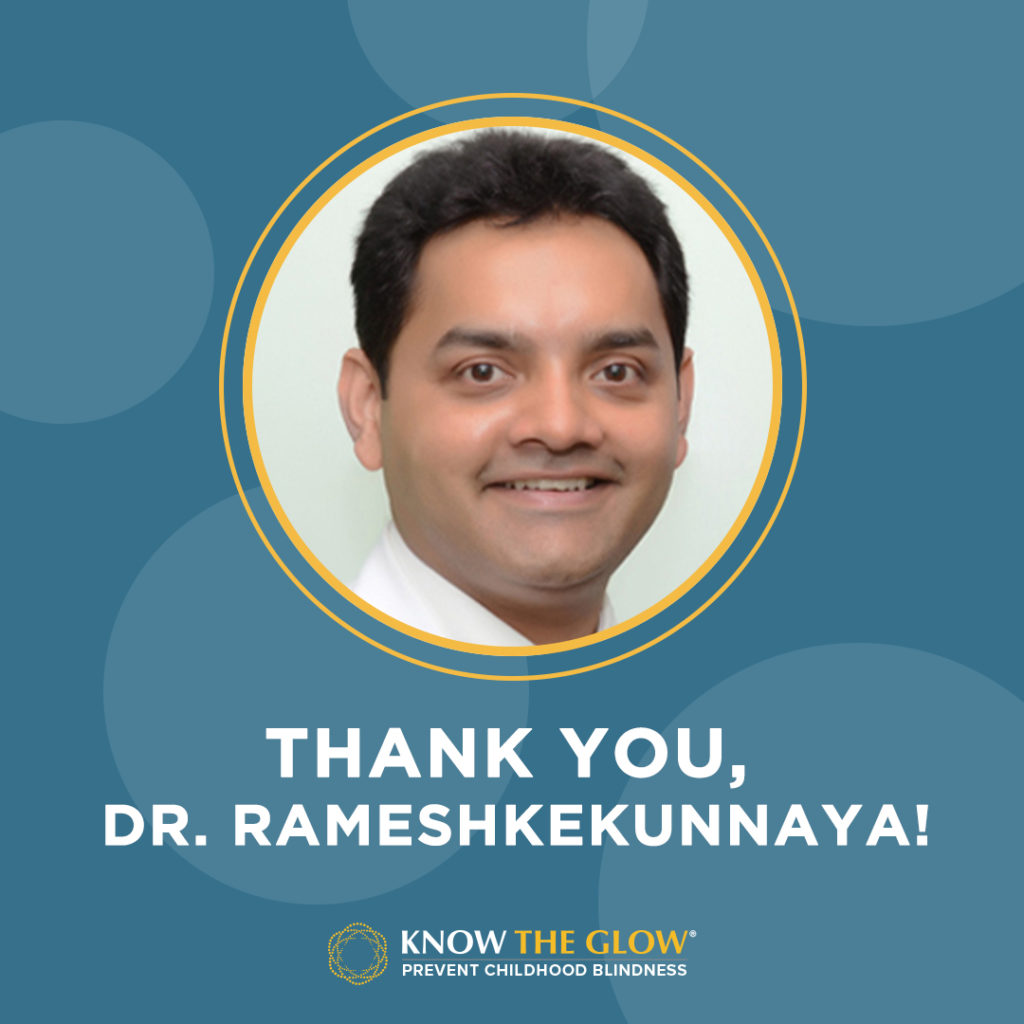Childhood blindness in India is estimated to be five times as that seen in the developed world. For that reason, KTG is making a concerted effort to reach out to medical professionals in the country to better understand how to reach these children and increase early detection of the red glow in the eye. Sadly, COVID-19 has impacted some of the strides India has made in early detection, negatively impacting the many eye screening programs in rural and urban areas. Many government resources have now been diverted to aid the COVID-19 efforts; but that has not stopped Dr. Ramesh Kekunnaya and his colleagues at L.V. Prasad Eye Institute, Hyderabad as he continues to explore digital screening and tele-ophthalmology to reach the most vulnerable communities.

KTG co-Founder, Megan Webber, had the opportunity to speak with Dr. Ramesh Kekunnaya, Head, Pediatric Ophthalmology, Strabismus & Neuro-ophthalmology, , Hyderabad (https://www.lvpei.org) about the unique circumstances surrounding the diagnosis and treatment of childhood blindness in India during this unprecedented time and going forward. Together they discussed how education and access can bring about earlier diagnosis and detection in India’s youngest population and how India can teach the next generation of health care providers so these children do not go undetected. L.V. Prasad is the epicentre of preeminent eye care in India with 33 years’ experience, with four children’s eye care centers, 20 secondary centers as well as 200+ vision centers. Despite L.V. Prasad’s best efforts, a few of the most vulnerable children are still missed. Dr. Kekunnaya stressed the importance of the strategic placement of centers in rural areas, so they are able to bring care even to villages and not just big cities where they already have resources. People in rural communities are weary of visiting bigger cities for eye care. Loss of daily wages is an issue as well. They bring their children to cities only for major eye ailments and are often too late for any significant recovery of sight. Rarely do you see a pediatric ophthalmologist like Dr. Kekunnaya and his colleagues at L.V. Prasad, who are eager to educate and bring awareness of the pediatric ophthalmology subspecialty to medical and nursing schools, so that they can increase the detection of early childhood eye disorders. Furthermore, Dr. Kekunnaya stresses the need for secondary centers to work alongside basic health care workers for better early detection, and better mother and child health screenings.
Dr. Kekunnaya explained that one of their challenges is to perform surgery for children with cataracts. Delayed presentation is a significant problem. In western countries, cataracts are diagnosed within the first weeks of life, whereas in India, diagnosis and referrals are often delayed, sometimes as late as when the child is 3 years old or even older, and the damage might be more permanent. He and his colleagues recognize that late diagnosis leads to the impact of the overall wellness of a child. When you have children coming in at the age of 6 or 7 years, with a diagnosis of cataracts, the effect of no sight and no learning for so many developmental years is debilitating. Dr. Kekunnaya’s team are looking additionally for ways to rehabilitate such children once their surgeries and follow ups have been completed. However, getting a child diagnosed with cataracts early and getting them the needed cataract surgery does not completely solve the problem. For full recovery of the child’s vision, it is vital to have regular follow up visits for spectacle renewal, eye pressure checks, etc. For this reason, it is essential for the local healthcare worker to keep the child and their parent engaged in the continued care required to achieve the optimal results of the cataract treatment.
Dr. Kekunnaya explained that the model used in these vision centers is the 3 R’S: Recognition of the eye condition, Refraction and prescription of appropriate spectacles and Referral of cases to secondary and Tertiary centres. Ultimately, Dr. Kekunnaya’s greatest desire is to increase the incidence of early detection in children by training and education at all levels. Delving deeper in the issue, Dr. Kekunnaya explains that there are neither adequate children’s eye care centers, nor adequate pediatric eye care specialists in India. In order to be effective, he believes there needs to be a push to use simpler methods to train people at every level to detect eye issues and the red glow. This includes school teachers, anganwadi health workers, paramedics, and professionals like pediatricians.
Megan was fascinated to learn about the Arclight scope which was developed by a Scottish friend of Dr. Kekunnaya. (https://arclightscope.com/) This device is cheap and can be worn on a lanyard and is therefore extremely portable and can be used to detect the red glow. Implementation of this device in rural and urban areas with an influx of trained volunteers / health care professionals could lead to an abundance of early detection in these communities.
The red glow test is not usually carried out in early stages of screening and this must change to become a first line test. KTG can help change this, by spreading awareness about the “glow” through social media. Together KTG and Dr. Kekunnaya will continue to explore ways to increase early detection of childhood blindness disorders by teaching graduating students and local health workers in pediatric ophthalmology about basic red glow screenings, and by cultivating impactful partnerships in the country.
